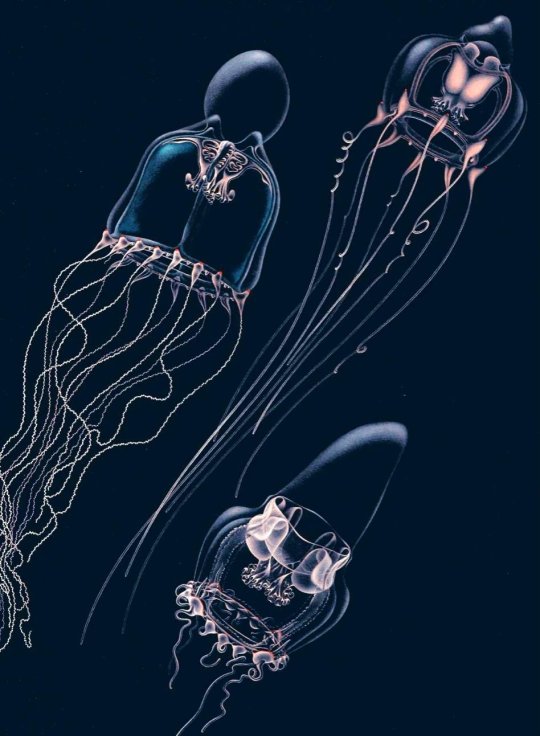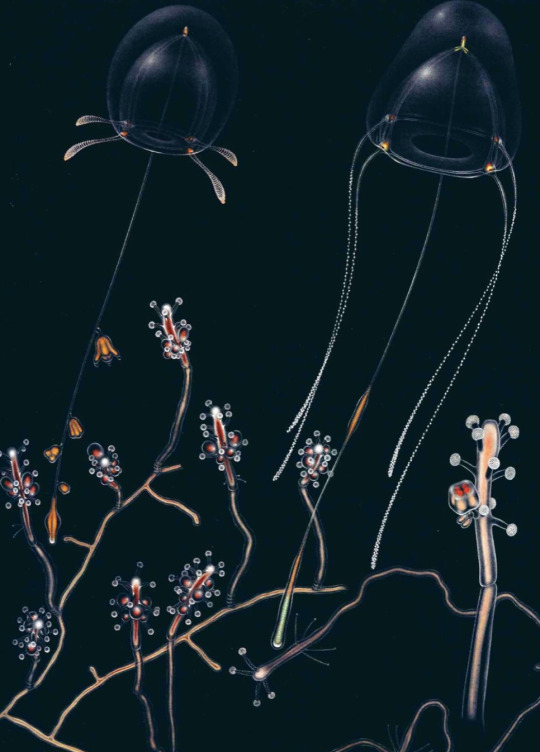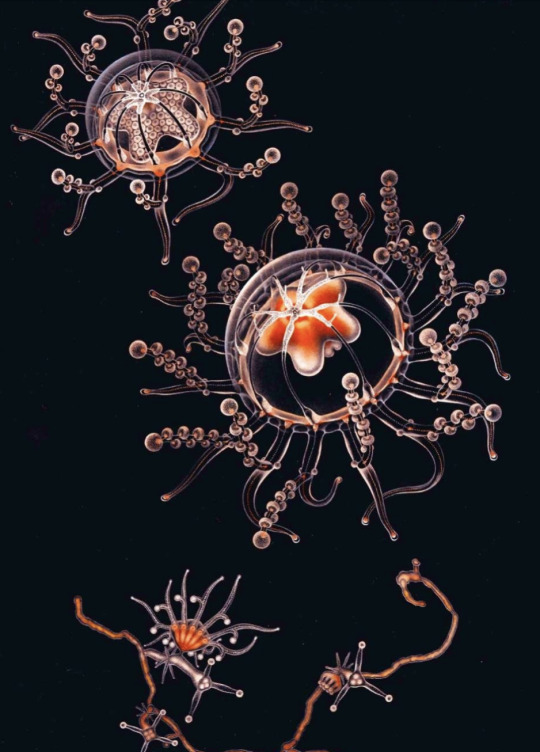Text





The lost jellyfish art of Ilona Richter, from Anita Brinckmann-Voss's 1970 book on jellyfish of the Mediterranean Sea...
#marine life#nature#ocean#science#illustration#science illustration#jellyfish#sea creatures#jellies#iridescent
4K notes
·
View notes
Text
OK, it literally took someone SWIMMING from Hawaii to California to discover this, but wow did we find something shocking in the Great Pacific Garbage Patch...
I'm a scientist, and it all started when this guy name Benoît Lecomte started swimming. He'd already freestyle'd his way from Japan to Hawaii, and now he was going to California. SWIMMING. And luckily for me and my science team, his mission was clear:
Swim through the heart of the Great Pacific Garbage Patch.
Benoît wanted to see, with his own eyes, what was actually out there. And we did, too. So, we teamed up. With one stroke at a time, for months, Benoît swam. While he did, a crew member on the ship that tracked him through the ocean took samples of the surface water. Our science team monitored the location of the patch, guiding Benoît right to it. At first, before they entered the patch, those net samples looked empty. But then...
BAM.
Benoît swam into the patch and we found something unbelievable: LIFE. Life living out there totally separate from plastic. When I told the person who discovered the Garbage Patch, Capt. Charles Moore, he wasn't surprised. "Oh I call that part of the ocean Neptunes Desert Nursery" he said. The name "Garbage Parch" came second. And there it was, blue floating life everywhere.
An ecosystem hardly anyone studies. Let me introduce you. In the video above you can see:
Blue sea dragon nudibranchs, and there's at least one species that's only ever been found in this desert nursery...
Violet snails, which float on bubble rafts...
By-the-wind sailor jellies (eaten by blue-sea dragons and violet snails)...
Pink and purple man-o-war...
And blue button jellies...
Not in this video are hundreds of species of baby fish, and juvenile sea turtles, all of which shelter at the ocean's surface because this part of the ocean is calm and quiet, at the center of swirling currents, a safe place to hide.
These animals are moved by the currents, just like plastic. If you look at the amount of plastic and the amount of life, they line up: More plastic, more life. And that's when I realized...
These "garbage patches" are so much more, they're beautiful and mysterious regions of the ocean, not empty space, and while many people want to clean them up, it's so frighteningly clear to me now that you can't use nets to clean plastic without scooping up this Pacific Desert Nursery.
When Benoît left this garbage patch/nursery ground, that thick meadow of life thinned, and by the time he reached California, the surface was largely empty again. What Ben did is remarkable, not only for his unbelievable power and courage but for what he helped discover.
We must stop plastic BEFORE it enters the ocean. Thanks to people like Benoît and Capt. Moore, we now know what is at stake: Not a Garbage Patch, but the beautiful, blue, ocean oasis, which just happens to be in the same spot as a lot of plastic.
To learn more about our study, including links to our work: https://twitter.com/RebeccaRHelm/status/1654536756493156357
And to learn about the only good way (so far) to remove ocean plastic from the garbage patch, check out this resource below: https://twitter.com/RebeccaRHelm/status/1572670307411939332
#marine life#nature#ocean#photography#science#ocean cleanup#sea#ocean life#sea creatures#sea life#marine animals#marine biology#aquatic animals#ocean plastic#plastic pollution#baby animals
40 notes
·
View notes